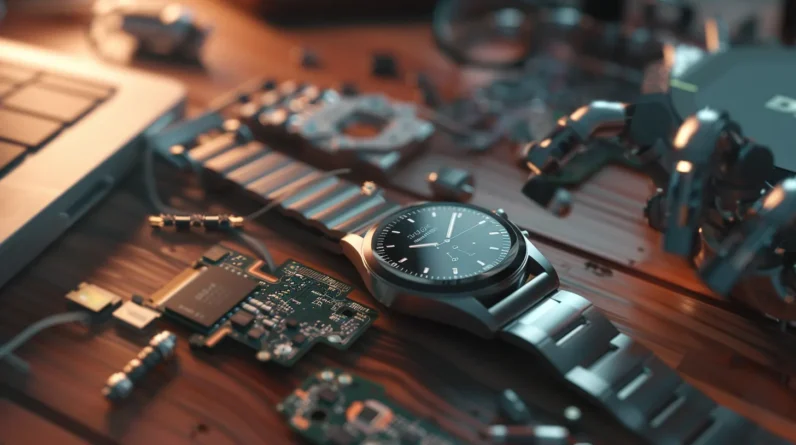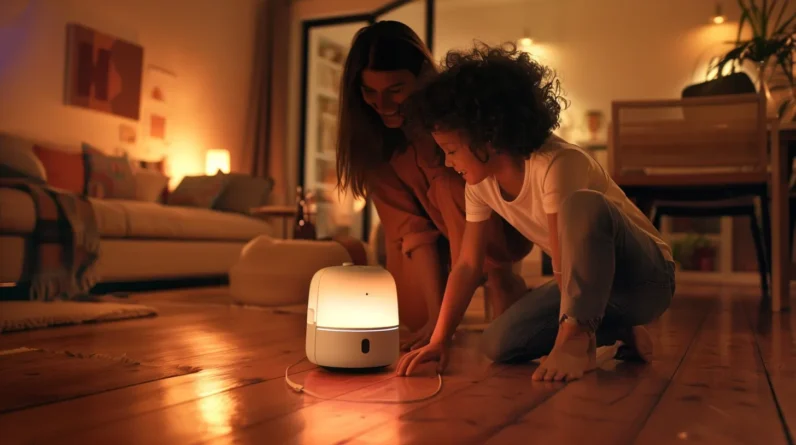
We’re on the cusp of a wearable tech revolution that’ll transform how we interact with the world. From advanced health monitoring to seamless augmented reality experiences, these devices are becoming more sophisticated and integrated into our daily lives. Smart clothing and accessories will offer unobtrusive biometric tracking, while workplace wearables will boost productivity and safety. As AI and 5G networks evolve, we’ll see more context-aware and predictive capabilities in our wearables. However, as these devices collect more personal data, addressing privacy and security concerns becomes vital. The future of wearable tech is exciting, but it is important to understand both its potential and challenges.
Health and Fitness Revolution
Revolutionizing our approach to health and fitness, wearable technology has become an indispensable tool for monitoring and improving our well-being. We’re witnessing a paradigm shift in personal health management, with devices that offer real-time biometric data and actionable insights. Advanced sensors now track not just steps and heart rate, but also sleep quality, stress levels, and even blood oxygen saturation.
The next frontier in wearable health tech lies in predictive analytics and AI-driven recommendations. We’ll see devices that can anticipate health issues before they manifest, suggesting preventive measures tailored to our individual physiology. Integration with telemedicine platforms will enable seamless sharing of data with healthcare providers, facilitating more accurate diagnoses and personalized treatment plans. As we move forward, expect wearables to become even more unobtrusive, with smart fabrics and implantable sensors pushing the boundaries of what’s possible in health monitoring.
Augmented Reality Advancements
Augmented Reality (AR) stands at the forefront of wearable tech’s evolution, promising to reshape our interaction with the digital and physical worlds. We’re witnessing rapid advancements in AR-enabled smart glasses and contact lenses, which seamlessly overlay digital information onto our physical environment. These devices are becoming more compact, powerful, and energy-efficient, paving the way for widespread adoption.
We can expect AR wearables to revolutionize industries like education, manufacturing, and healthcare. Imagine surgeons accessing real-time patient data during procedures or technicians receiving step-by-step visual instructions for complex repairs. The integration of AI and machine learning will further enhance AR capabilities, enabling context-aware experiences that anticipate our needs. As 5G networks proliferate, we’ll see a surge in cloud-based AR applications, offloading processing power and expanding possibilities. The future of AR wearables is bright, offering unprecedented ways to augment our perception and capabilities.
Smart Clothing and Accessories
In light of the wearable tech revolution, smart clothing and accessories are emerging as the next frontier of personal technology. We’re witnessing the integration of advanced sensors, conductive fabrics, and miniaturized electronics into everyday garments and accessories. These innovations are poised to transform how we interact with our environment and monitor our health.
Key developments in smart clothing and accessories include:
1. Biometric monitoring: Garments that track essential signs, posture, and movement in real-time
2. Adaptive clothing: Fabrics that change properties based on environmental conditions
3. Connected accessories: Rings, bracelets, and glasses that seamlessly interface with our digital ecosystems
As these technologies mature, we’ll see a shift from standalone wearables to a more integrated, holistic approach to personal tech. The future of smart clothing lies in creating unobtrusive, washable, and aesthetically pleasing designs that seamlessly blend technology with fashion, offering unprecedented functionality without compromising comfort or style.
Workplace Integration
Wearable technology is rapidly finding its way into the workplace, reshaping how we approach productivity, safety, and collaboration. We’re seeing smart glasses that provide hands-free access to information, enhancing efficiency in manufacturing and logistics. Smartwatches are streamlining communication and time management, while biometric sensors monitor employee health and stress levels, promoting well-being.
In the future, we’ll likely witness more integration of augmented reality (AR) devices, enabling immersive training experiences and remote assistance. Exoskeletons will become commonplace in physically demanding jobs, reducing injuries and increasing output. We’ll also see advancements in brain-computer interfaces, allowing for thought-controlled interactions with devices. As these technologies evolve, we’ll need to address privacy concerns and develop new workplace policies. The key will be striking a balance between leveraging wearables for productivity gains and maintaining employee autonomy and well-being.
Privacy and Security Concerns
Despite the promising advancements in wearable technology, we’re faced with significant privacy and security challenges. As these devices collect and transmit increasingly personal data, we must address:
1. Data encryption: Ensuring robust protection for sensitive information during storage and transmission.
2. User consent: Implementing transparent policies for data collection and usage.
3. Third-party access: Limiting and regulating how external entities can interact with our personal data.
We’re entering an era where our devices know more about us than ever before. This intimate knowledge brings unprecedented convenience but also exposes us to potential breaches and misuse. As we push the boundaries of wearable tech, we must simultaneously bolster our defenses against cyber threats. The future of wearables hinges on our ability to balance innovation with ironclad security measures, ensuring user trust remains intact as we embrace these transformative technologies.
Conclusion
As we ride the wave of wearable tech innovation, we’re on the cusp of a digital revolution that’ll seamlessly blend with our daily lives. From health-monitoring smart fabrics to AR-enabled contact lenses, the future is literally at our fingertips. We must navigate this brave new world with both excitement and caution, balancing the potential for unprecedented connectivity with the need for robust privacy safeguards. The wearable tech frontier is vast, and we’re just scratching the surface.







